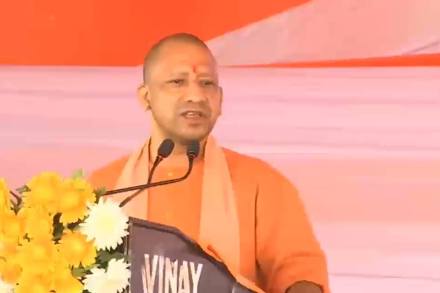Uttar Pradesh Chief Minister Yogi Adityanath’s news cabinet has 52 ministers with over half of them being new faces. A quick look at the ministers, their region and caste suggest a carefully curated team with a focus on the 2024 Lok Sabha Elections. Uttar Pradesh has been a crucial state with respect to the general elections as it has 80 Lok Sabha seats and any party winning a majority of these stands a fair chance of getting into power in Delhi. In the last two elections, the BJP led NDA had won 71 seats in 2014 and 62 in 2019, thus playing a crucial role in propelling the saffron party to power.
The BJP’s new lineup seeks to leave no space for the opposition Samajwadi Party to exploit the caste equations and thus have 19 ministers from OBC communities including Kurmis, Nishad, Jats, Gujjars and Yadavs. Of the 52 ministers in Yogi Adityanath’s cabinet, seven are Brahmin, seven Thakurs, eight Dalits, four Vaishyas, two Bhumihars, one each from Kayasth, Khatri, Sikh, Muslim and Tribal community. The Yogi cabinet has two Deputy Chief Ministers, 16 Cabinet Ministers, 14 Ministers of State (Independent Charge) and 20 other Ministers of State.
The BJP did not take any chance with the upper caste vote base as it replaced Brahmin leader Dinesh Sharma, who was Deputy Chief Minister in the previous government, with Brajesh Pathak, another Brahmin leader. Despite losing from Sirathu, Keshav Prasad Maurya has been retained as the other Deputy chief minister. He is an OBC leader. So the top three represent Thakur (CM Adityanath), OBC (Deputy CM Maurya) and Brahmin (Deputy CM Pathak) while Dalit has found its representation in the cabinet in from of Baby Rani Maurya. Jitin Prasada, a Congress turncoat, is another Brahmin face.
Since Samajwadi Party candidates from the Kurmi community defeated three ministers and other sitting MLAs of the saffron party, the BJP has given them due to prominence by including four ministers from the community. One of them is Swatantra Dev Singh, an influential OBC leader and currently the state BJP president. Singh, who belongs to the backward Kurmi caste and played a crucial role in paving the way for the party’s second consecutive win in the UP Assembly polls, was elevated to the post of the state BJP chief in 2019.
The four new Kurmi ministers represent four regions – Swatantra Dev Singh comes from Orai/Mirzapur, Ashish Patel from Bundelkhand, Rakesh Sachan from Kanpur and Sanjay Gangwar from Rohilkhand.
Another influential leader Baby Rani Maurya, who hails from Jatav (OBC) community and resigned from the Uttarakhand governor’s post last year to contest the UP polls, has found a place in the Yogi cabinet. The 65-year-old Dalit leader was sworn in as an Uttar Pradesh cabinet minister. Jaswant Singh Saini, another OBC leader, has also been included in the cabinet.
A caste wise classification of the OBC leaders show there are three Jats are Laxmi Narayan Chaudhary from Mathura, Bhupendra Singh Chaudhary from Moradabad, K P Malik from Baghpat’s Baraut and a Gujjar face as in Somendra Tomar who won from Meerut South. The eight Dalit ministers are Baby Rani Maurya, Asim Arun, Gulabo Devi, Dinesh Khatik, Manohar Lal Kori, Suresh Rahi, Anup Valmiki and Vijay Laxmi Gautam. Suresh Rahi is the lone minister from the Pasi community.
Danish Azad Ansari is the only Muslim face in new government. Hailing from Ballia, Ansari replaced Mohsin Raza, who served as the minister of state for minorities welfare in the previous BJP government. He took an oath as a minister of state.
Of the five women ministers, three are Dalits. These are Baby Rani Maurya, Gulab Devi and Vijay Laxmi Gautam. Two Bhumihar leaders have also made it to the cabinet – Surya Pratap Shahi and A K Sharma. Sharma is a close confidant of Prime Minister Narendra Modi.
